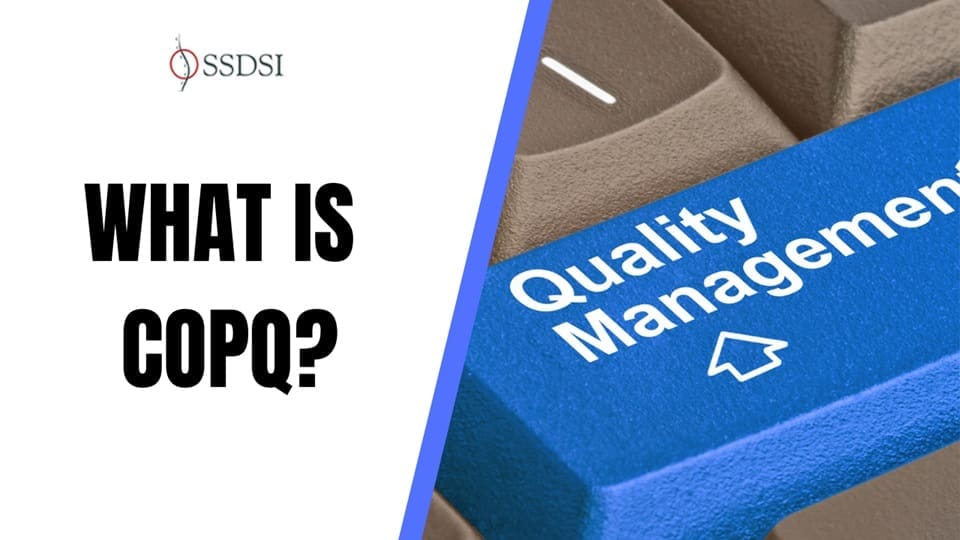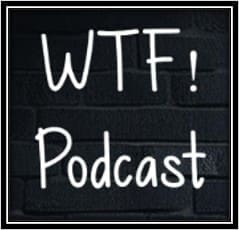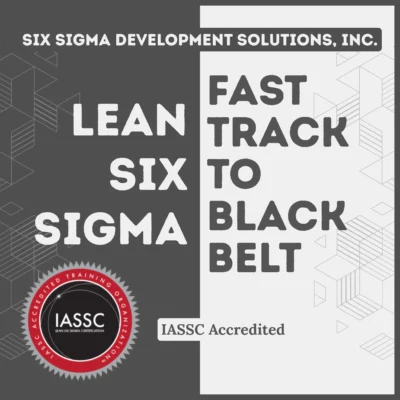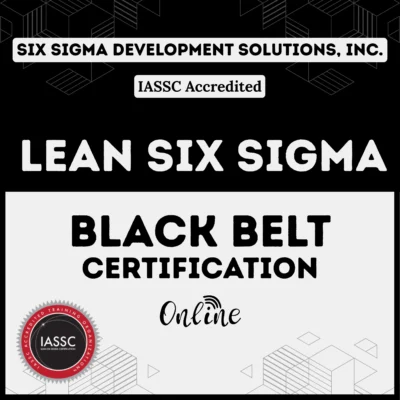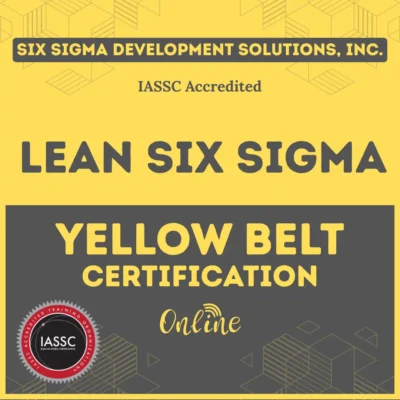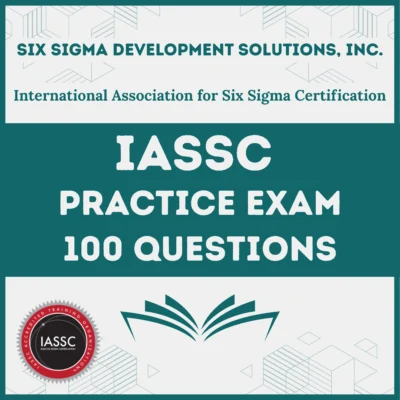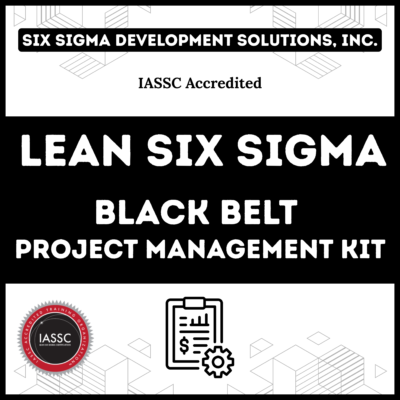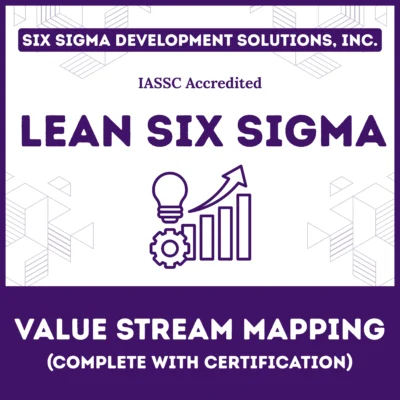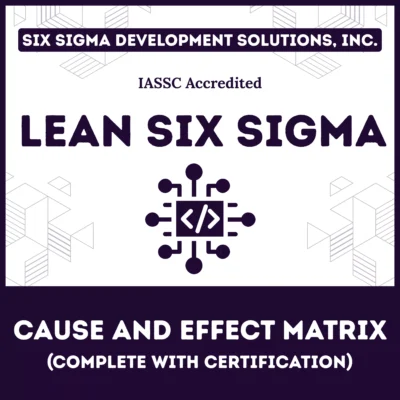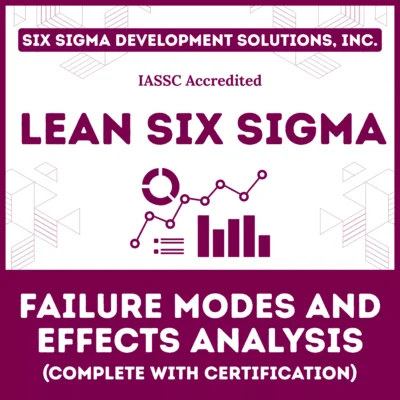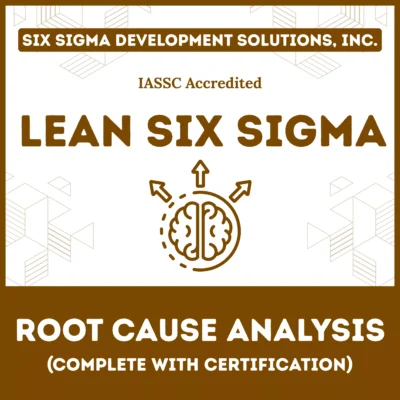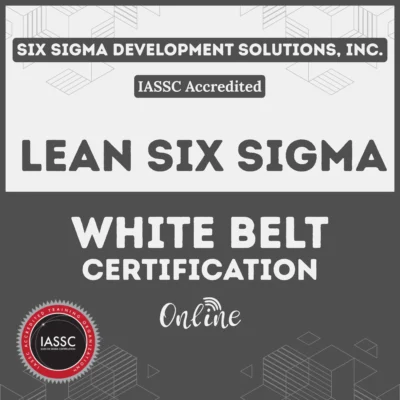The Cost of Poor Quality (CoPQ) refers to the financial impact caused by delivering subpar products or services. It represents the costs associated with deficiencies in quality, which can affect both a company’s bottom line and its reputation. This concept is crucial for companies aiming to improve their competitiveness and customer satisfaction.
To understand CoPQ fully, it is essential to look at its direct and indirect impacts.
Table of contents
What is the Cost of Poor Quality (COPQ)?
Cost of Poor Quality (COPQ) refers to the financial losses when a company delivers substandard products or services. These costs arise from defects, inefficiencies, and the need for rework. They affect a company’s profitability and competitiveness. In short, COPQ is the price a business pays for not meeting quality standards.
CoPQ is the difference between the actual cost incurred due to poor quality and the minimum cost that remains even if every process and product were perfect. The basic formula for CoPQ is:
CoPQ = Actual Cost – Minimum Cost
- Actual Cost: The total expense caused by poor quality.
- Minimum Cost: The costs that remain unavoidable even if the quality is perfect.
CoPQ typically involves both visible and hidden costs. Visible costs are those that are easy to track and calculate. Hidden costs are less apparent and harder to measure but are often far greater in impact.
Definition of COPQ
COPQ includes all expenses associated with poor quality products or services. It covers waste, rework, repair costs, and the resources spent on fixing problems. Additionally, it includes lost opportunities like damaged reputation or churned customers.
COPQ is an important factor in continuous quality improvement (CQI).
Companies use quality costs as a tool for improving processes, reducing waste, and increasing customer satisfaction. By identifying and managing COPQ, businesses can enhance their competitiveness and profitability.
How to Calculate CoPQ?
To calculate CoPQ, you can use the following formula:
CoPQ (%) = (Total Poor Quality Costs / Total Net Sales) x 100
This formula helps calculate the percentage of sales that are lost due to poor quality. You can track CoPQ over a specific period, such as monthly or yearly, to identify trends and measure the effectiveness of quality improvement efforts.
Once calculated, companies can create reports to analyze CoPQ and track its progress. Reports can include detailed breakdowns of direct and indirect costs, allowing businesses to identify areas for improvement.
Impact on Business
COPQ directly affects a company’s financial performance. High COPQ results in increased operational costs, which can reduce profit margins. If defects or quality issues are not addressed, it can lead to customer dissatisfaction, loss of market share, and even regulatory fines.
One of the most significant effects of COPQ is on profitability. As businesses spend more resources fixing mistakes, they miss out on opportunities for growth. Reducing COPQ is crucial for improving efficiency and increasing profitability.
Classification of CoPQ
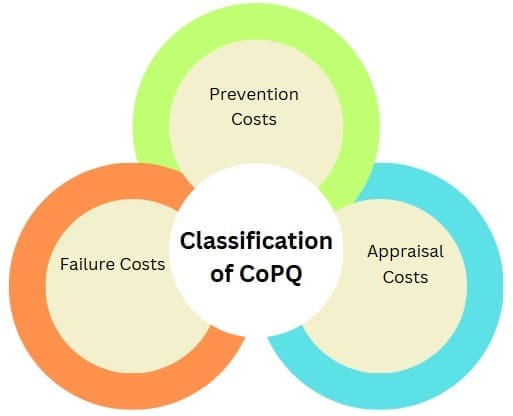
To better understand CoPQ, it’s essential to classify the cost items involved. The classification of CoPQ varies across different authors but generally includes several main categories. Feigenbaum (1991) introduced the Prevention, Appraisal, and Failure (PAF) model, which divides CoPQ into three main categories:
- Prevention Costs: These are proactive costs aimed at preventing poor quality from happening in the first place. They include activities like quality management system design and implementation (Campanella, 1990).
- Appraisal Costs: These costs are related to evaluating whether products and processes meet the required standards (Feigenbaum, 1991). They include inspections and tests to ensure quality is maintained.
- Failure Costs: These costs arise when products or processes fail to meet quality standards. Failure costs are further split into:
- Internal Failure Costs: These are costs incurred when defects are detected before products reach customers.
- External Failure Costs: These costs are incurred when defects are found after products have been delivered to customers, leading to customer dissatisfaction and additional corrective actions.
Types of Costs
COPQ can be divided into visible and hidden costs. Visible costs are easy to identify, like rework or inspections. Hidden costs, however, are more challenging to quantify. These include the long-term effects of poor quality, such as lost customers or the cost of restoring a damaged reputation.
The “Cost of Quality Iceberg” is a useful model to understand these costs. The visible costs are represented by the tip of the iceberg, while hidden costs lie beneath the surface. These hidden costs can sometimes be three to ten times higher than visible costs, making them a significant concern for businesses.
Also See: Lean Six Sigma Certification Programs, Glendale, Arizona
Visible and Hidden Costs
CoPQ can be broken down into visible and hidden costs. Visible costs are usually recorded in financial statements. Hidden costs, however, are not immediately visible in accounting books but can lead to long-term financial damage.
Visible Costs
These are the costs that companies can easily track and report. They are often divided into categories like:
- Controllable CoPQ Costs:
- Prevention Costs: Investments in quality planning, training, inspections, audits, and process control.
- Appraisal Costs: Costs related to testing, inspections, and supplier acceptance processes.
- Resultant CoPQ Costs: These costs arise when the company delivers defective products or services, leading to internal and external errors, rework, and customer returns.
- Equipment CoPQ Costs: Investments in equipment used for measurement, inspection, or process control fall under this category.
Hidden Costs
Hidden costs are more difficult to measure and often don’t show up in financial records. They can have a major impact on long-term profitability and customer relationships. Some examples include:
- Customer-Incurred Costs: These costs arise when customers face downtime due to faulty products, pay for repairs, or experience shipping costs due to returns.
- Customer-Dissatisfaction Costs: Negative word of mouth and loss of future business due to customer dissatisfaction.
- Loss of Reputation Costs: Damaged brand reputation caused by poor quality leading to lost trust and sales.
Direct vs. Indirect CoPQ Costs
CoPQ costs can be divided into direct and indirect costs.
Direct CoPQ Costs
These costs can be directly tracked and managed, as they are typically recorded in the company’s financial system. They include:
- Controllable CoPQ: These are costs the company can directly influence, like prevention activities and inspections.
- Resultant CoPQ: Costs incurred from defective products and services, leading to rework, repairs, and replacements.
- Equipment CoPQ: Costs related to equipment used to measure, inspect, or control the quality of products.
Indirect CoPQ Costs
Indirect costs are harder to measure but are still significant. They often result from poor quality over time. Examples include:
- Customer-Incurred Costs: Costs to customers for downtime, repairs, or returns.
- Customer-Dissatisfaction Costs: Loss of future sales due to negative customer perceptions and complaints.
- Reputation Loss: Long-term damage to the company’s reputation, leading to a decline in market share and customer trust.
Examples of COPQ in Practice
A company that produces faulty products will face internal failure costs like waste and rework. If the defects are not caught in time, external failure costs will include warranty claims and customer returns. Additionally, the company’s reputation may suffer, leading to lost sales and customer trust.
For example, a manufacturing company may spend resources fixing defective parts during production (internal failure). If the defective products are shipped to customers, the company will face returns, repairs, and potential legal claims (external failure).
Measuring COPQ
To manage and reduce COPQ, companies need to measure it accurately. This involves tracking costs across all four categories and identifying where inefficiencies occur. By collecting data on quality costs, businesses can pinpoint areas for improvement and prioritize actions that will have the greatest impact.
Organizations can use various methods to measure COPQ, including:
- Cost of Investment (COI): This refers to costs related to product design changes or process improvements aimed at reducing poor quality.
- Levelized Cost of Energy (LCOE): In the context of energy production, this refers to the cost of generating electricity, which includes the impact of poor quality on overall efficiency.
Strategies to Reduce COPQ
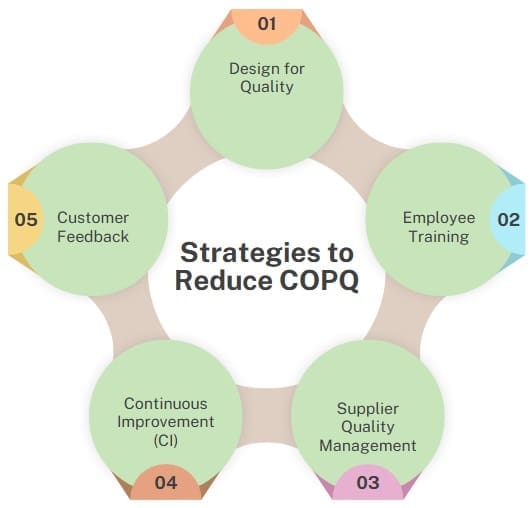
Reducing COPQ requires a structured approach to quality improvement. Some strategies include:
- Design for Quality: Focus on designing products and processes that are error-free from the start. This reduces the need for rework and internal failure costs.
- Employee Training: Ensure that employees are trained in quality management practices. This helps prevent mistakes and reduces internal failure costs.
- Supplier Quality Management: Work closely with suppliers to ensure that raw materials and components meet quality standards, reducing defects and rework.
- Continuous Improvement (CI): Implement a culture of continuous improvement using methodologies like Six Sigma, Lean, and Total Quality Management (TQM). These approaches help identify root causes of quality issues and implement sustainable solutions.
- Customer Feedback: Listen to customer complaints and returns to identify areas for improvement. External feedback can provide valuable insights into where quality improvements are needed.
Role of COPQ in Continuous Improvement
COPQ plays a central role in continuous quality improvement (CQI) programs. Companies that focus on improving quality can reduce COPQ, which in turn boosts profitability. CI methodologies like DMAIC (Define, Measure, Analyze, Improve, Control) and PDCA (Plan, Do, Check, Act) are commonly used to address quality issues and reduce costs.
By using COPQ data, companies can prioritize their improvement efforts and ensure that resources are allocated effectively. The goal is to reduce defects, improve customer satisfaction, and increase the overall efficiency of the business.
Importance of Measuring COPQ
Tracking COPQ is crucial for understanding the impact of poor quality on a business. Without measurement, a company may not know where quality issues are occurring or how much they are costing. By tracking both visible and hidden costs, businesses can gain a clearer picture of their quality performance and take steps to address any inefficiencies.
Implementing a quality cost measurement system allows companies to identify areas for improvement and reduce the risk of quality issues in the future. It also provides a way to demonstrate the financial benefits of quality improvement initiatives to stakeholders.
Benefits of Reducing CoPQ
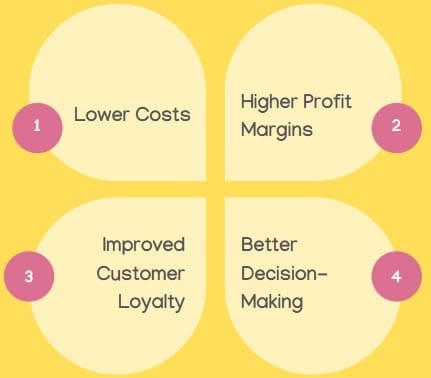
Reducing CoPQ offers several advantages, including:
- Lower Costs: By eliminating defects early in the process, companies can save on rework, warranty claims, and returns.
- Higher Profit Margins: With fewer resources spent on fixing problems, profit margins can improve.
- Improved Customer Loyalty: Providing high-quality products or services leads to higher customer satisfaction, loyalty, and repeat business.
- Better Decision-Making: Understanding the true costs of poor quality allows for data-driven decisions that prioritize quality in every aspect of the business.
Strategies to Reduce CoPQ
Companies can adopt various strategies to reduce CoPQ:
Focus on Prevention: Invest in quality planning, process control, and training to prevent defects from occurring in the first place.
Implement Efficient Processes: Streamline operations to reduce errors, waste, and inefficiencies.
Enhance Supplier Relationships: Work with suppliers to ensure they meet quality standards, reducing incoming defects.
Foster a Quality Culture: Promote a culture of quality throughout the organization, where everyone takes responsibility for maintaining high standards.
Final Words
Cost of Poor Quality (COPQ) is a critical factor in the financial health of a company. It includes the costs associated with defects, rework, inspections, and customer complaints. By understanding and measuring COPQ, businesses can identify areas for improvement and take steps to reduce waste, improve efficiency, and enhance customer satisfaction.
To stay competitive, companies must focus on continuous quality improvement and address the root causes of poor quality. Reducing COPQ not only improves profitability but also strengthens a company’s reputation and customer loyalty. By investing in quality upfront, companies can avoid the costs of poor quality and achieve long-term success.

About Six Sigma Development Solutions, Inc.
Six Sigma Development Solutions, Inc. offers onsite, public, and virtual Lean Six Sigma certification training. We are an Accredited Training Organization by the IASSC (International Association of Six Sigma Certification). We offer Lean Six Sigma Green Belt, Black Belt, and Yellow Belt, as well as LEAN certifications.
Book a Call and Let us know how we can help meet your training needs.

